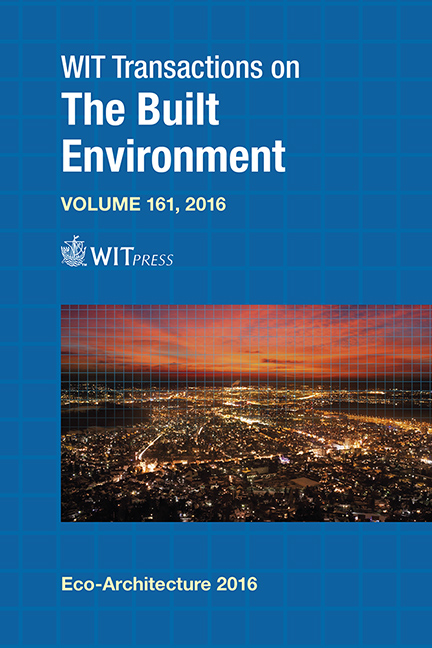An Environmental Renovation Strategy Based On Adaptive Control Optimisation Of A Modular Light Regulating Façade System
Price
Free (open access)
Transaction
Volume
161
Pages
12
Page Range
71 - 82
Published
2016
Paper DOI
10.2495/ARC160071
Copyright
WIT Press
Author(s)
A. G. Michael, K. C. Alexandrou, P. G. Konatzii, A. K. Kalli
Abstract
The design of building envelopes, and in particular reactive facades, has shown a rapid growth, engaged in an increasing amount of applications in contemporary architecture. Recent developments in adaptive building skins have clearly shown their potential on effectively handling and optimising multiple energy performance issues through their enhanced responsive behaviour characteristics. In the meantime, the design outcome has been acknowledged in many cases, and exhibited great growth on many architectural aspects, by related means of environmental, functional and aesthetic optimization. In this frame, such systems have a great prospect of establishing a high efficiency renovation strategy of the existing building stock in Europe. This strategy may apply to both aged-buildings and contemporary highly-glazed buildings, aiming at their environmental renovation, by eliminating extensive use of artificial illumination in the indoor spaces. In this framework, the present paper proposes a re-active prototype facade system, responsible for dealing with lighting regulation of indoor spaces. The research focuses on achieving comfortable natural lighting levels and uniform lighting distribution along the indoor space of a typical office space. Parametric associative design logic has been employed to assist the kinetic simulation of the transformable skin facade. A series of real-time lighting performance analyses describe the fluctuations of lighting levels and uniformity factor of the space under study, according to the kinetic transformation of the adaptive façade system. Conclusively, this paper discusses the results obtained and further control optimisation potentials of the system, towards a more efficient daylighting regulation.
Keywords
adaptive building skin, natural lighting levels, uniformity daylighting factor, parametric design, dynamic simulation analysis





